Abstract
This paper reviews problems with the definition and estimation of interactions in epidemiologic studies. Methods for modeling interactions and dose-response also are reviewed, and references to more detailed literature are provided. Concepts are illustrated in the context of evaluating the joint effects of household radon exposure and environmental tobacco smoke.
Full text
PDF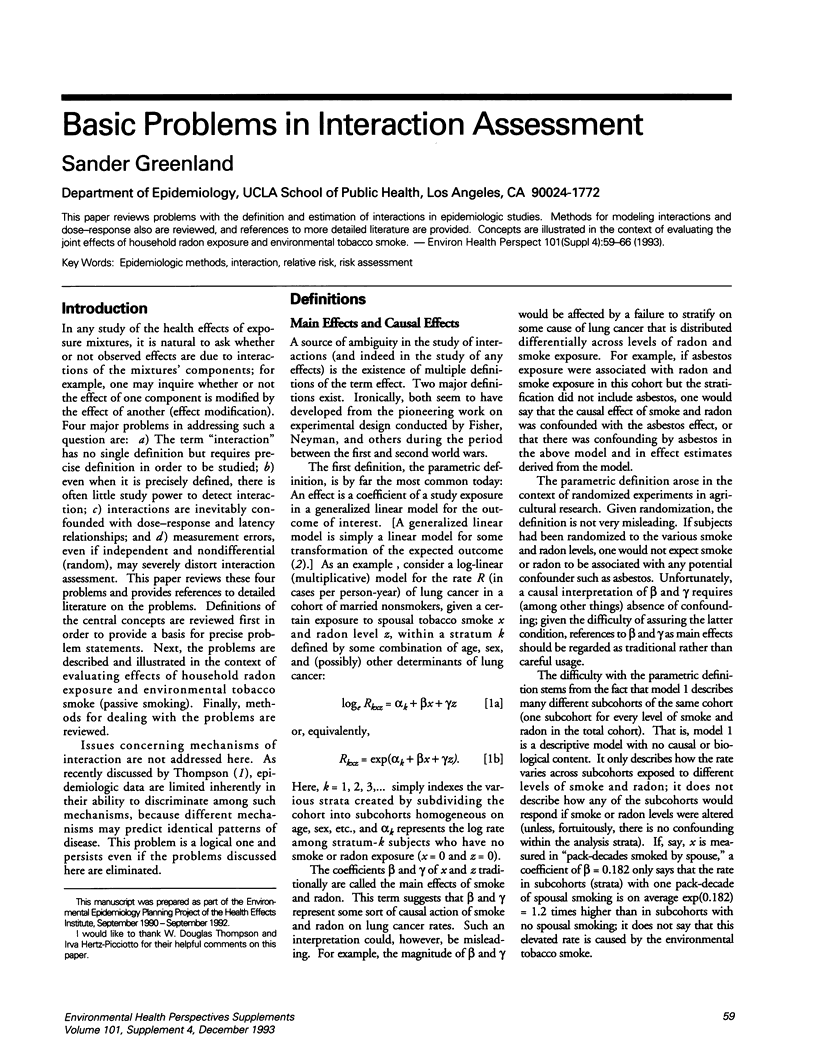
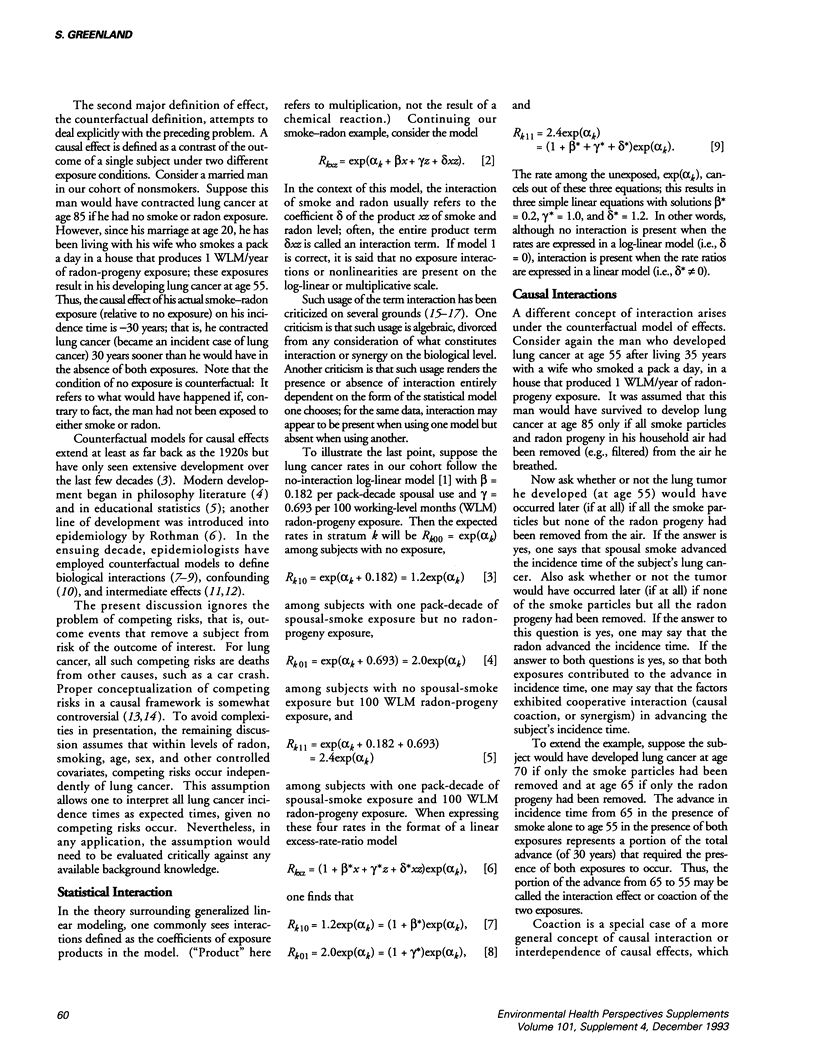
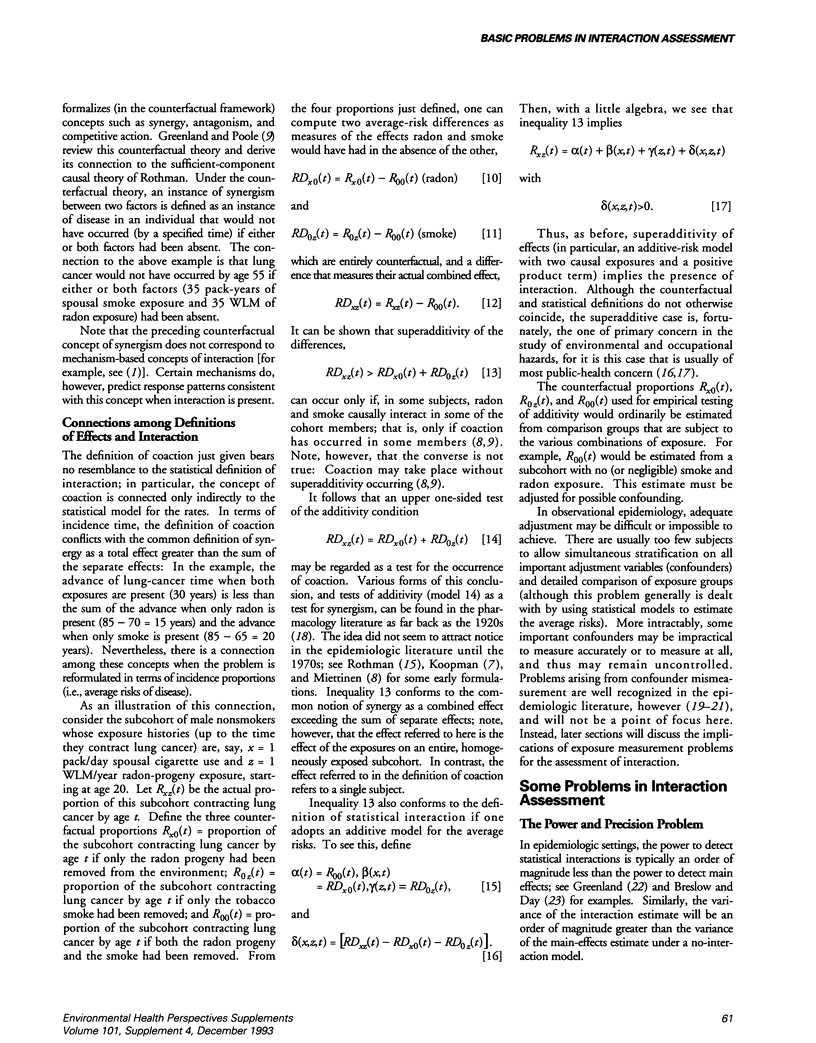
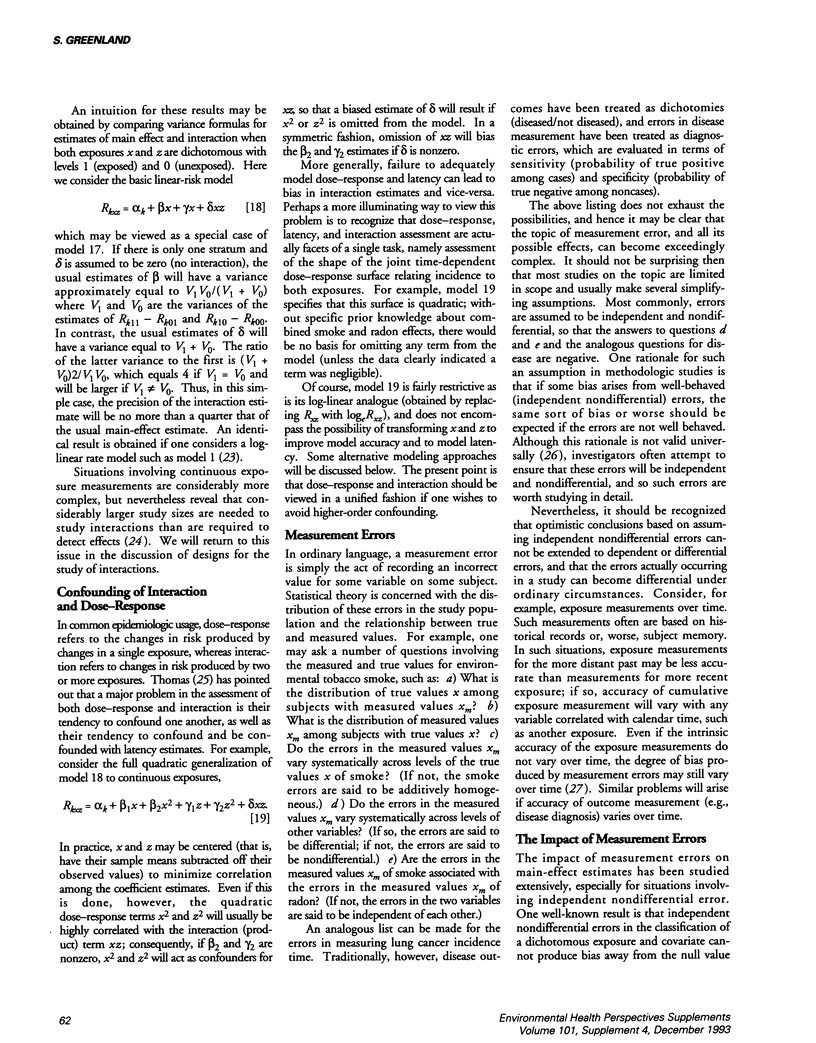
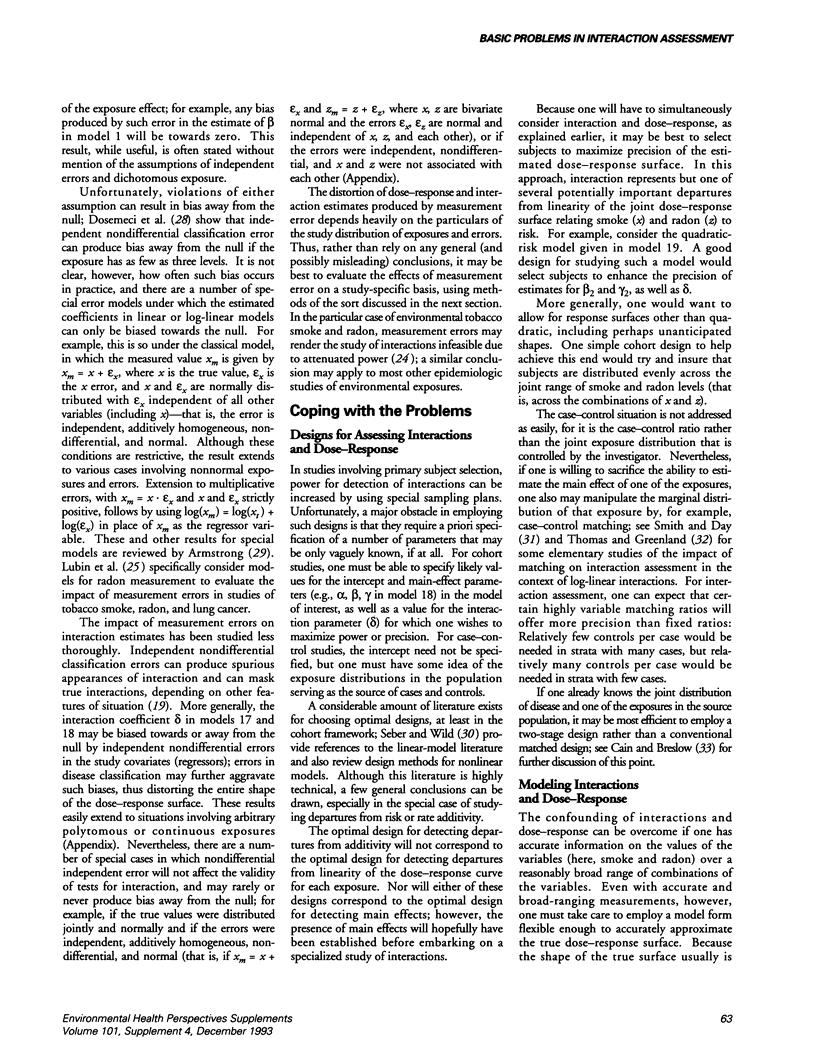
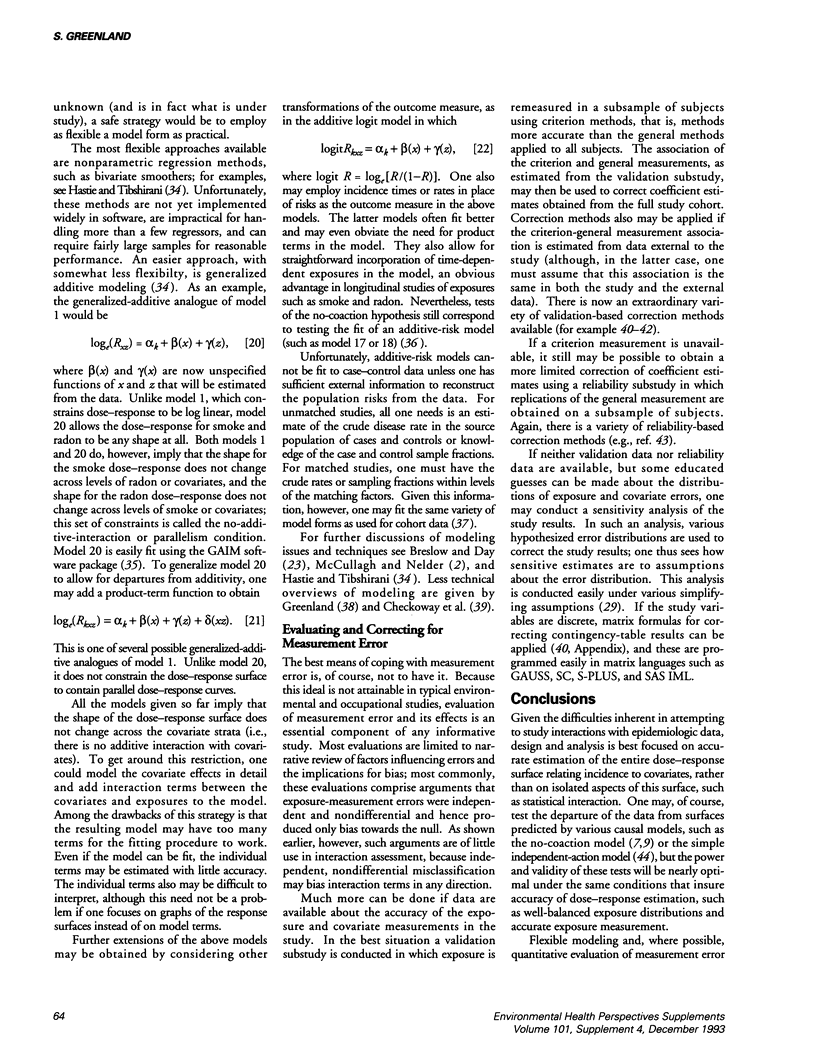
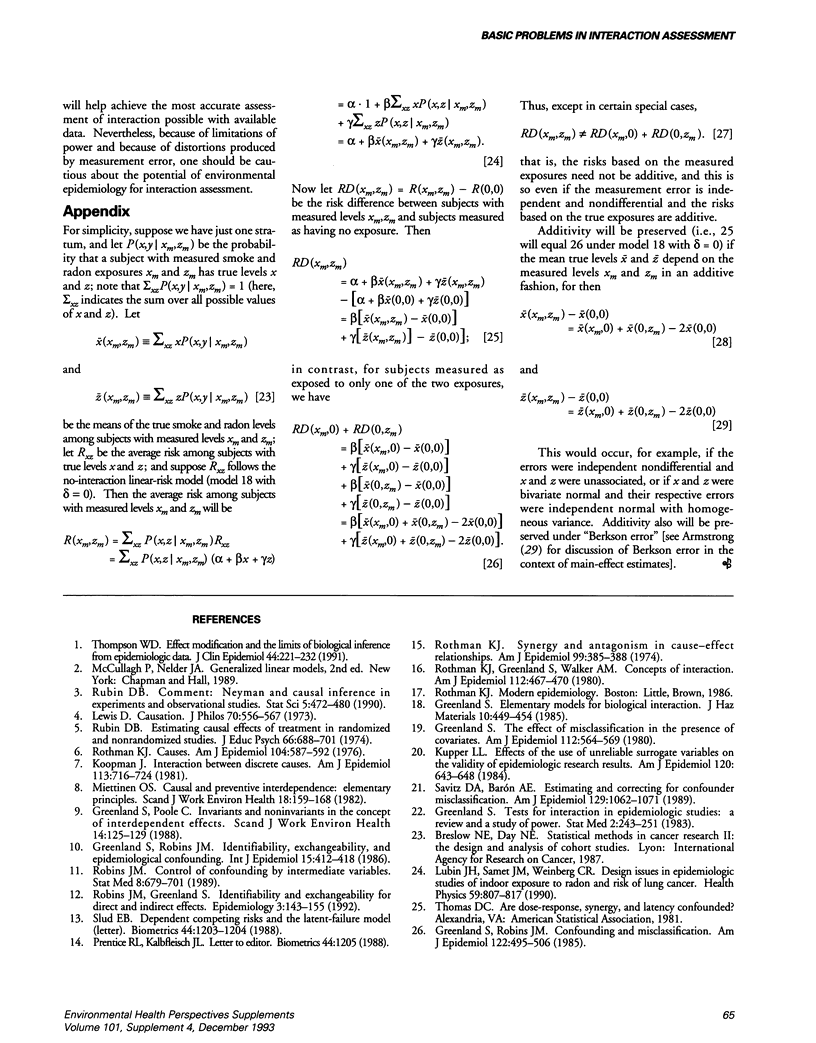
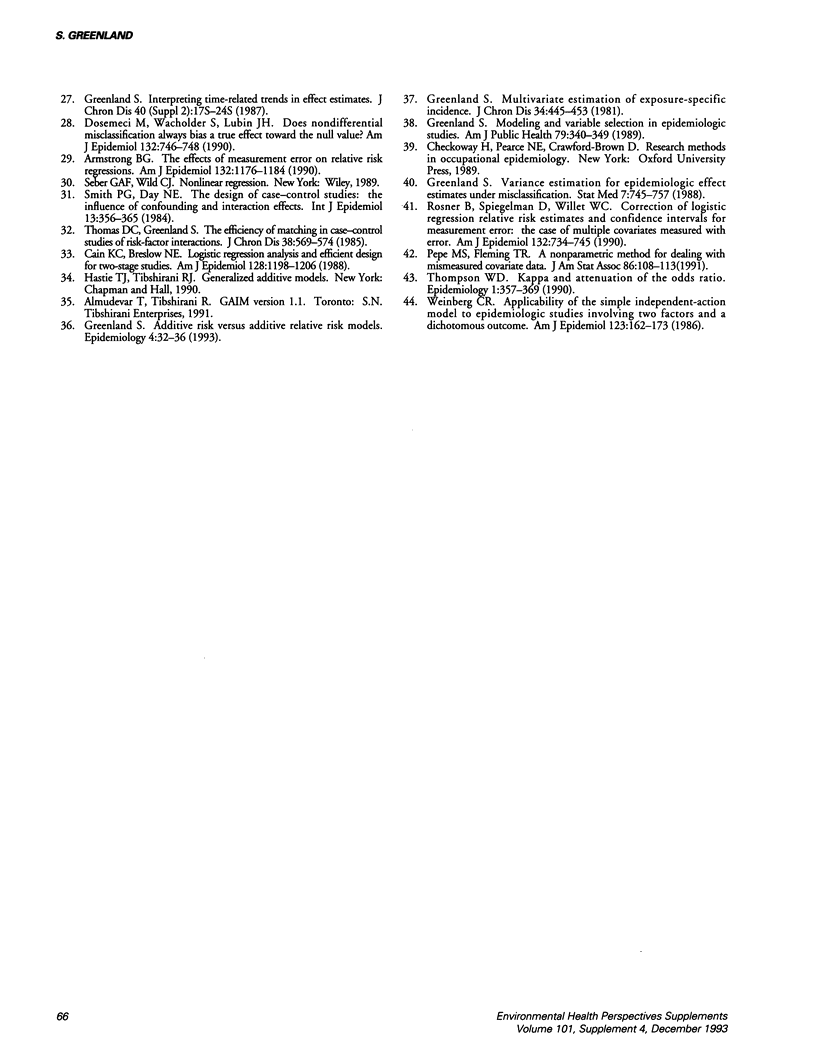
Selected References
These references are in PubMed. This may not be the complete list of references from this article.
- Armstrong B. G. The effects of measurement errors on relative risk regressions. Am J Epidemiol. 1990 Dec;132(6):1176–1184. doi: 10.1093/oxfordjournals.aje.a115761. [DOI] [PubMed] [Google Scholar]
- Cain K. C., Breslow N. E. Logistic regression analysis and efficient design for two-stage studies. Am J Epidemiol. 1988 Dec;128(6):1198–1206. doi: 10.1093/oxfordjournals.aje.a115074. [DOI] [PubMed] [Google Scholar]
- Dosemeci M., Wacholder S., Lubin J. H. Does nondifferential misclassification of exposure always bias a true effect toward the null value? Am J Epidemiol. 1990 Oct;132(4):746–748. doi: 10.1093/oxfordjournals.aje.a115716. [DOI] [PubMed] [Google Scholar]
- Greenland S. Additive risk versus additive relative risk models. Epidemiology. 1993 Jan;4(1):32–36. doi: 10.1097/00001648-199301000-00007. [DOI] [PubMed] [Google Scholar]
- Greenland S. Interpreting time-related trends in effect estimates. J Chronic Dis. 1987;40 (Suppl 2):17S–24S. doi: 10.1016/s0021-9681(87)80005-x. [DOI] [PubMed] [Google Scholar]
- Greenland S. Modeling and variable selection in epidemiologic analysis. Am J Public Health. 1989 Mar;79(3):340–349. doi: 10.2105/ajph.79.3.340. [DOI] [PMC free article] [PubMed] [Google Scholar]
- Greenland S. Multivariate estimation of exposure-specific incidence from case-control studies. J Chronic Dis. 1981;34(9-10):445–453. doi: 10.1016/0021-9681(81)90004-7. [DOI] [PubMed] [Google Scholar]
- Greenland S., Poole C. Invariants and noninvariants in the concept of interdependent effects. Scand J Work Environ Health. 1988 Apr;14(2):125–129. doi: 10.5271/sjweh.1945. [DOI] [PubMed] [Google Scholar]
- Greenland S., Robins J. M. Confounding and misclassification. Am J Epidemiol. 1985 Sep;122(3):495–506. doi: 10.1093/oxfordjournals.aje.a114131. [DOI] [PubMed] [Google Scholar]
- Greenland S. Tests for interaction in epidemiologic studies: a review and a study of power. Stat Med. 1983 Apr-Jun;2(2):243–251. doi: 10.1002/sim.4780020219. [DOI] [PubMed] [Google Scholar]
- Greenland S. The effect of misclassification in the presence of covariates. Am J Epidemiol. 1980 Oct;112(4):564–569. doi: 10.1093/oxfordjournals.aje.a113025. [DOI] [PubMed] [Google Scholar]
- Greenland S. Variance estimation for epidemiologic effect estimates under misclassification. Stat Med. 1988 Jul;7(7):745–757. doi: 10.1002/sim.4780070704. [DOI] [PubMed] [Google Scholar]
- Koopman J. S. Interaction between discrete causes. Am J Epidemiol. 1981 Jun;113(6):716–724. doi: 10.1093/oxfordjournals.aje.a113153. [DOI] [PubMed] [Google Scholar]
- Kupper L. L. Effects of the use of unreliable surrogate variables on the validity of epidemiologic research studies. Am J Epidemiol. 1984 Oct;120(4):643–648. doi: 10.1093/oxfordjournals.aje.a113926. [DOI] [PubMed] [Google Scholar]
- Lubin J. H., Samet J. M., Weinberg C. Design issues in epidemiologic studies of indoor exposure to Rn and risk of lung cancer. Health Phys. 1990 Dec;59(6):807–817. doi: 10.1097/00004032-199012000-00004. [DOI] [PubMed] [Google Scholar]
- Miettinen O. S. Causal and preventive interdependence. Elementary principles. Scand J Work Environ Health. 1982 Sep;8(3):159–168. doi: 10.5271/sjweh.2479. [DOI] [PubMed] [Google Scholar]
- Robins J. M., Greenland S. Identifiability and exchangeability for direct and indirect effects. Epidemiology. 1992 Mar;3(2):143–155. doi: 10.1097/00001648-199203000-00013. [DOI] [PubMed] [Google Scholar]
- Robins J. The control of confounding by intermediate variables. Stat Med. 1989 Jun;8(6):679–701. doi: 10.1002/sim.4780080608. [DOI] [PubMed] [Google Scholar]
- Rosner B., Spiegelman D., Willett W. C. Correction of logistic regression relative risk estimates and confidence intervals for measurement error: the case of multiple covariates measured with error. Am J Epidemiol. 1990 Oct;132(4):734–745. doi: 10.1093/oxfordjournals.aje.a115715. [DOI] [PubMed] [Google Scholar]
- Rothman K. J. Causes. Am J Epidemiol. 1976 Dec;104(6):587–592. doi: 10.1093/oxfordjournals.aje.a112335. [DOI] [PubMed] [Google Scholar]
- Rothman K. J., Greenland S., Walker A. M. Concepts of interaction. Am J Epidemiol. 1980 Oct;112(4):467–470. doi: 10.1093/oxfordjournals.aje.a113015. [DOI] [PubMed] [Google Scholar]
- Rothman K. J. Synergy and antagonism in cause-effect relationships. Am J Epidemiol. 1974 Jun;99(6):385–388. doi: 10.1093/oxfordjournals.aje.a121626. [DOI] [PubMed] [Google Scholar]
- Savitz D. A., Barón A. E. Estimating and correcting for confounder misclassification. Am J Epidemiol. 1989 May;129(5):1062–1071. doi: 10.1093/oxfordjournals.aje.a115210. [DOI] [PubMed] [Google Scholar]
- Slud E. V., Byar D. P., Schatzkin A. Dependent competing risks and the latent-failure model. Biometrics. 1988 Dec;44(4):1203–1205. [PubMed] [Google Scholar]
- Smith P. G., Day N. E. The design of case-control studies: the influence of confounding and interaction effects. Int J Epidemiol. 1984 Sep;13(3):356–365. doi: 10.1093/ije/13.3.356. [DOI] [PubMed] [Google Scholar]
- Thomas D. C., Greenland S. The efficiency of matching in case-control studies of risk-factor interactions. J Chronic Dis. 1985;38(7):569–574. doi: 10.1016/0021-9681(85)90045-1. [DOI] [PubMed] [Google Scholar]
- Thompson W. D. Effect modification and the limits of biological inference from epidemiologic data. J Clin Epidemiol. 1991;44(3):221–232. doi: 10.1016/0895-4356(91)90033-6. [DOI] [PubMed] [Google Scholar]
- Thompson W. D. Kappa and attenuation of the odds ratio. Epidemiology. 1990 Sep;1(5):357–369. doi: 10.1097/00001648-199009000-00005. [DOI] [PubMed] [Google Scholar]
- Weinberg C. R. Applicability of the simple independent action model to epidemiologic studies involving two factors and a dichotomous outcome. Am J Epidemiol. 1986 Jan;123(1):162–173. doi: 10.1093/oxfordjournals.aje.a114211. [DOI] [PubMed] [Google Scholar]


